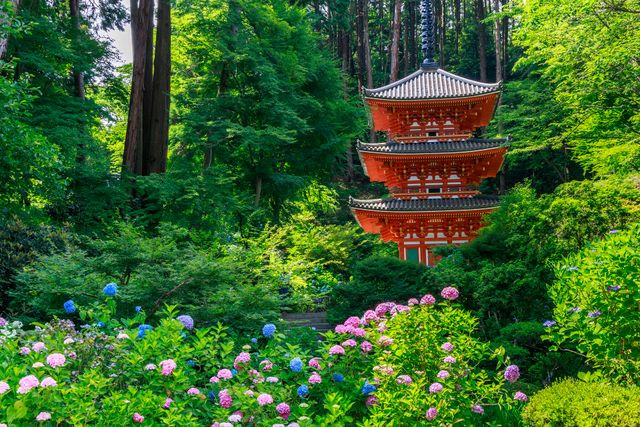Iwafune-ji Temple
menuMenu
Known as the "Hydrangea Temple," Iwafune-ji boasts numerous historical structures scattered throughout its grounds, including Kamakura-period stone Buddhas and pagodas. The three-storied pagoda, designated as an Important Cultural Property of Japan, is a must-see.








Highlights
- The three-storied pagoda, designated as an Important Cultural Property of Japan
- Kamakura-period stone Buddhas and pagodas
- Hydrangeas
- Serene temple grounds
- Historically significant structures
Basic Information
- Address
- 43 Iwafune Kaminomon, Kamo-cho, Kizugawa City, Kyoto Prefecture Search for tourist attractions in Kyoto
- Access
- Approximately 15 minutes by Kizugawa City Community Bus Tao Line from Kamo Station on the Kisei Main Line (JR West Japan), get off at "Iwafune-ji". Approximately 18 minutes by Nara Kotsu bus (Hiroo-bound) from JR Nara Station or Kintetsu Nara Station (Kintetsu Nara Line), get off at "Iwafune-ji-guchi", then a 25-minute walk. The "Ocha no Kyoto Kizugawa Ancient Temple Pilgrimage Bus" operates only on Saturdays, Sundays, and holidays in April, May, and November. It takes about 30 minutes and drops you off right at "Iwafune-ji". Show route
- Op.Hours
- March - November: 8:30 AM - 5:00 PM (Reception closes at 4:45 PM) December - February: 9:00 AM - 4:00 PM (Reception closes at 3:45 PM) Open all year round
- Cld.Days
- Open every day
- Fee
- Adults: ¥500, Junior high & high school students: ¥400, Elementary school students: ¥200 Group rate (30 or more people): Adults: ¥400, Junior high & high school students: ¥300, Elementary school students: ¥100 *Visitors with disability certificates will receive a discount for themselves and one caregiver upon presentation of the certificate. Disability discount: Adults: ¥300, Junior high & high school students: ¥200, Elementary school students: ¥100, One caregiver: ¥300
- INFO
- There is no parking lot on the temple grounds. Please use nearby commercial parking lots.
